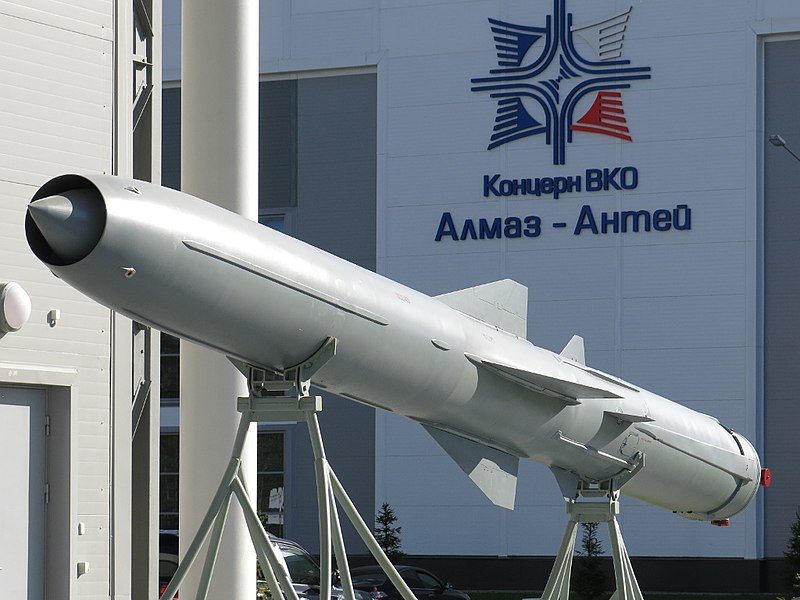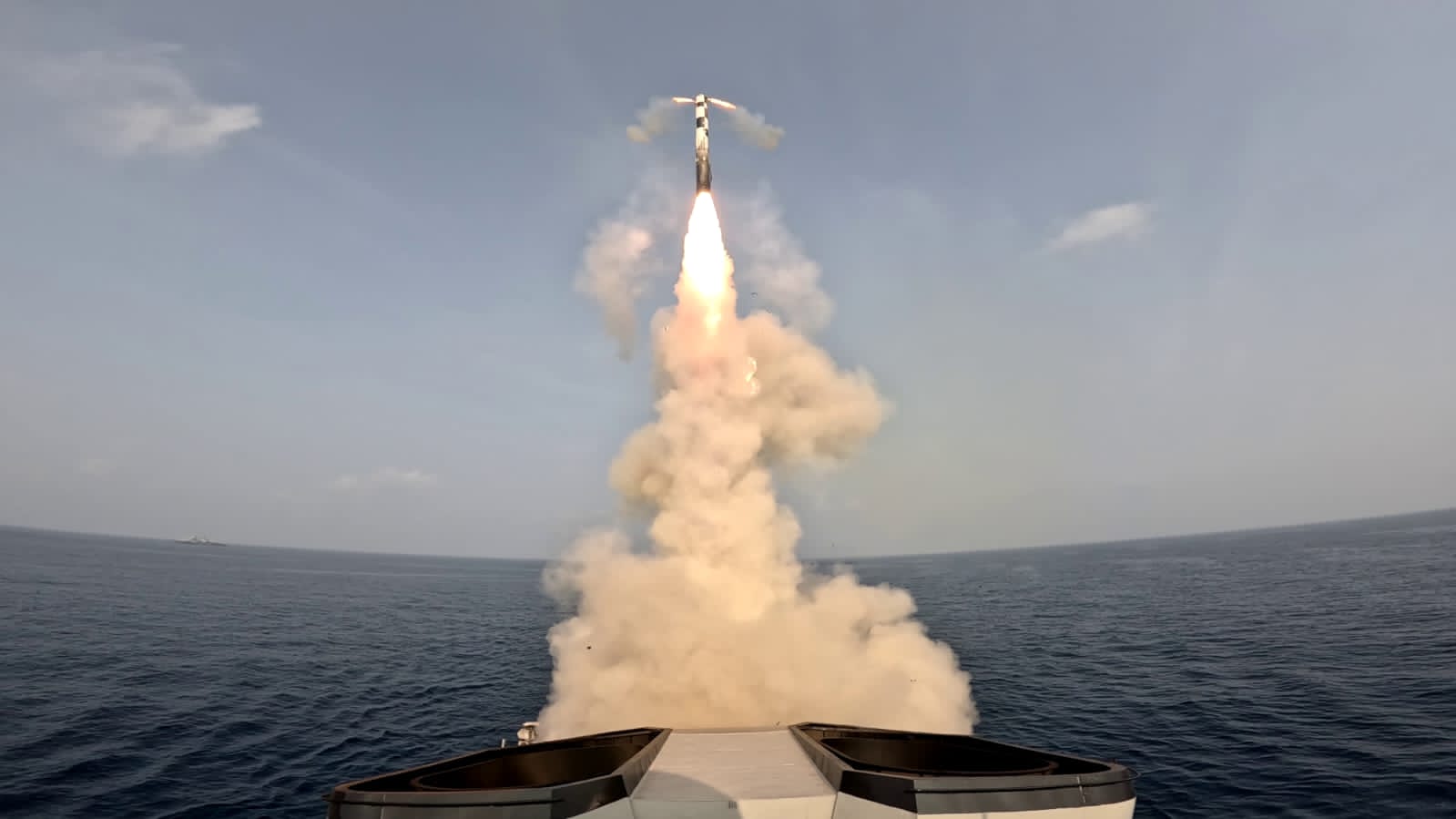Russia’s Onyx supersonic cruise missile, which has frequently struck Ukrainian targets in Odesa near the Black Sea, is slated to get deadlier with a new target seeker. The missile is fired from the Bastion coastal missile defense complex or Russian warships of the Black Sea Fleet (BSF).
Moscow has predominantly used missiles like the air-launched Kh-101 and the sea-fired Kalibr for its long-range standoff strikes into Ukraine, with the Onyx employed only a handful of times.
Russian media reports, however, claim that the new upgrade to the Onyx can be taken to be an indication of the missile’s use being increased in the future, to strike land targets that support Ukraine’s kamikaze drone boat war in the Black Sea.
New Seeker For Higher Accuracy
According to a report in TASS, the “supersonic anti-ship missiles Onyx of the coastal missile systems Bastion” has received “new active homing heads, which allows them to hit ground targets of the Armed Forces of Ukraine (AFU) with high accuracy.”
“Originally developed as anti-ship missiles, work is also underway to ensure the invulnerability of the Onyxes to the effects of electronic warfare systems of the Ukrainian Armed Forces,” the report added.

The P-800 Onyx was developed by the Reutov NPO Mashinostroeniya (part of the Tactical Missile Arms Corporation). It is designed to combat “surface ship groups, as well as to destroy ground targets in conditions of strong fire and electronic countermeasures.”
It is carried by surface ships and submarines of the Russian Navy and was also “used to destroy terrorist ground targets in Syria.”
Ukraine Vs. Russian Standoff Missiles
Russia uses the Onyx missile, an anti-ship weapon, as a part of its Bastion-P coastal missile defense system. In November 2022, reports emerged that Russia was also developing a launcher that could fire both the Onyx and the Zircon (Tsirkon) anti-ship missiles.
Interestingly, both missiles can also be used for land-attack roles. Last year, on March 23, a month after the beginning of the war, Russia fired a P-800 Onyx from a Bastion battery on a warehouse in Ukraine near the Black Sea port of Odesa. According to Russia’s Ministry of Defense (RuMoD), the building held weapons and ordnance.
Another strike on a civilian-military target on July 6, 2023, at Lviv has been assessed to have been possibly conducted by an Onyx, given the scale of destruction; the kind of hit and damage to a structure could only be caused by a powerful supersonic missile.
Thus, Russia has a variety of missiles and launching platforms, such as warships, ground launchers, and aircraft like the Tu-95MS, the MiG-31K, the Tu-160, or the Tu-22.
It has employed air-launched land-attack cruise and ballistic missiles like the Kalibr (another sea-launched land attack cruise missile), the Kh-101, the Kinzhal hypersonic missile, or Iskander against Ukraine in its long-range missile strikes where it fires volleys and waves of weapons on Ukrainian targets.
The P-800 Onyx is another missile to the inventory that can be used at unpredictable intervals and patterns and surfaces at a time when Ukraine is in a position to predict and somewhat prepare for such Russian missile and drone strikes.
This is because of the unofficial presence of NATO advisors and experts on the ground who analyze data gathered from special mission aircraft like the E-3 Sentry Airborne Warning Control System (AWACS), the RC-135 Rivet electronic intelligence (ELINT) aircraft or the RQ-4B Global Hawk reconnaissance drone.
Information is also gathered through American surveillance satellites that have infrared sensors used to detect the launch of jets or missiles, particularly the Kinzhal aeroballistic hypersonic missile launched from the MiG-31K.
Curiously, the last Onyx officially reported by the RuMoD was on May 3 and May 8, 2022. It showed the Bastion coastal missile system launching the missile from the “Black Sea coast” at “Ukrainian military infrastructure.”
Possibly being fired from Crimea, this was during the first three months of the war when Russia had announced the stated “demilitarization” goal, aimed at crippling Ukraine’s defense industrial base and destroying its ability to fight a war.
However, later reports also suggested that even the ship-fired version of the Onyx may have also been part of Russia’s “long-range” missile strikes, as it claimed to have hit targets in Odesa. This is because Odesa is on the Black Sea and it would make sense for Russia to strike those by launching the missile from its missile corvettes of the Black Sea Fleet (BSF).
By October 2023, when the war in the Black Sea had escalated with Ukrainian unmanned kamikaze boat strikes that damaged and sunk a few Russian vessels, the missile corvettes of the Black Sea Fleet (BSF) were still launching the Onyx two to three times a week on Ukrainian land targets. Bastion batteries based in Crimea, too, were firing Onyx missiles.
Onyx Is BrahMos Analog
It would be pertinent to note that India’s BrahMos missile is a derivative of the Onyx, particularly the latest BrahMos-Extended Range (ER) Land Attack Cruise Missile (LACM), which can reach 450 km, from its previous range of 290 km. The same missile can also be used for anti-ship roles.

The missile’s supersonic speed causes severe damage to hardened targets, and some experts consider it the next best thing to the Kinzhal aeroballistic hypersonic missile.
How Russia has employed the Onyx can serve as a learning opportunity for India, particularly in a non-contact standoff war. Combined with a good surveillance and target-acquisition capability, the BrahMos can be effective in striking an adversary’s rear positions, such as command and control centers and logistical supply nodes.
- The author can be reached at satamp@gmail.com
- Follow EurAsian Times on Google News




